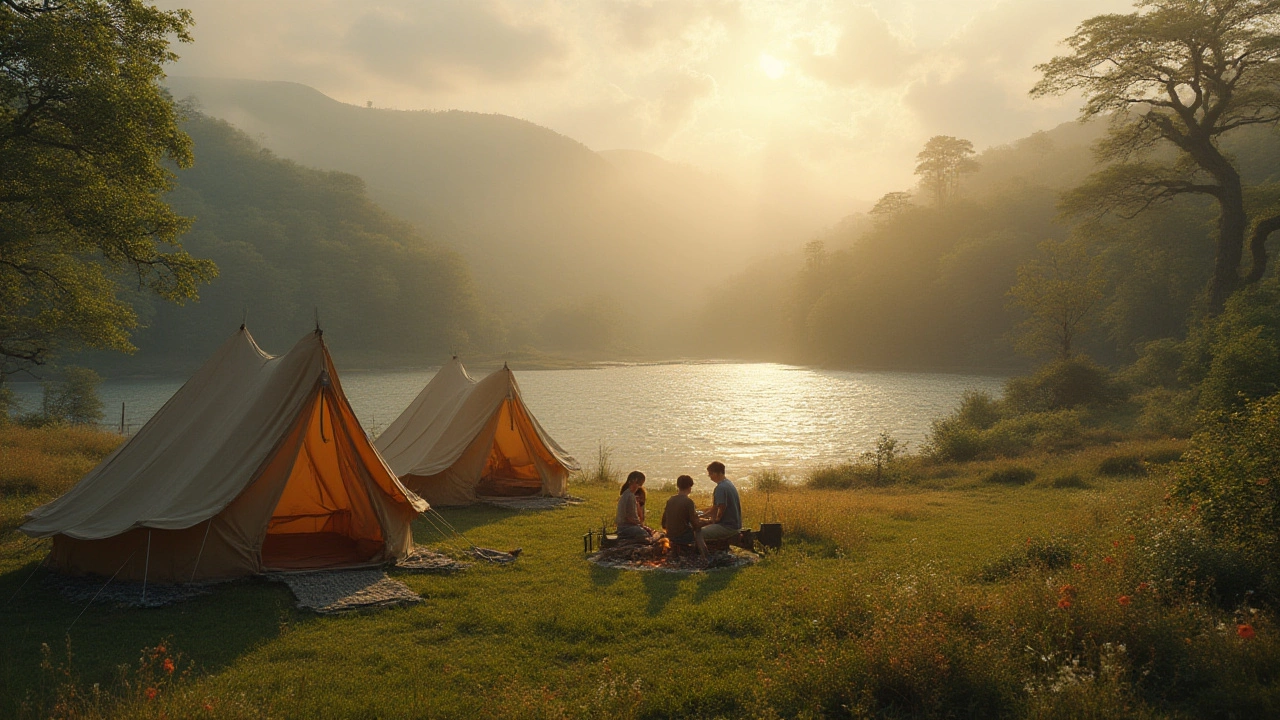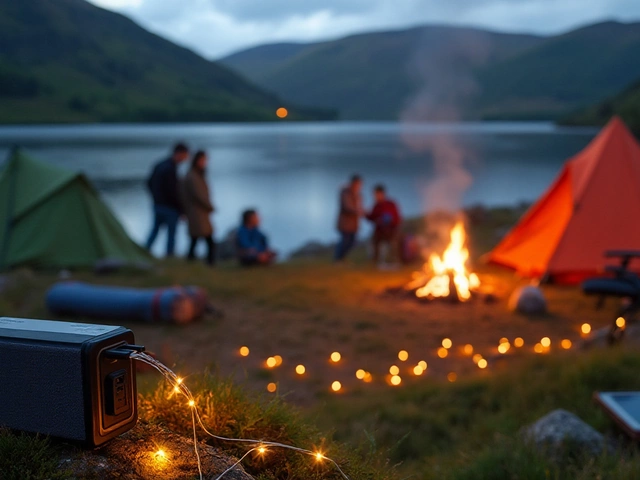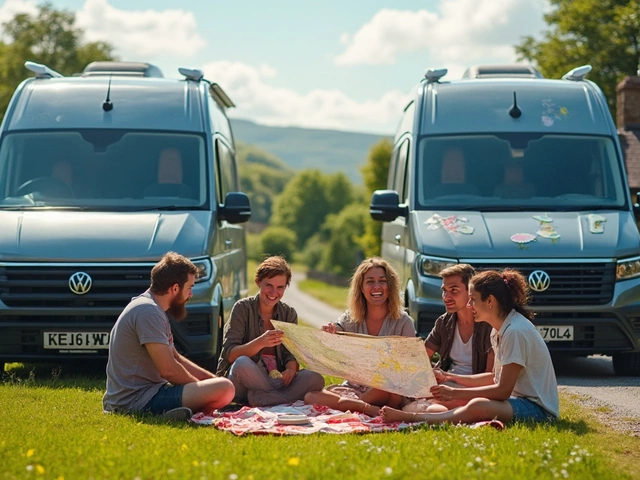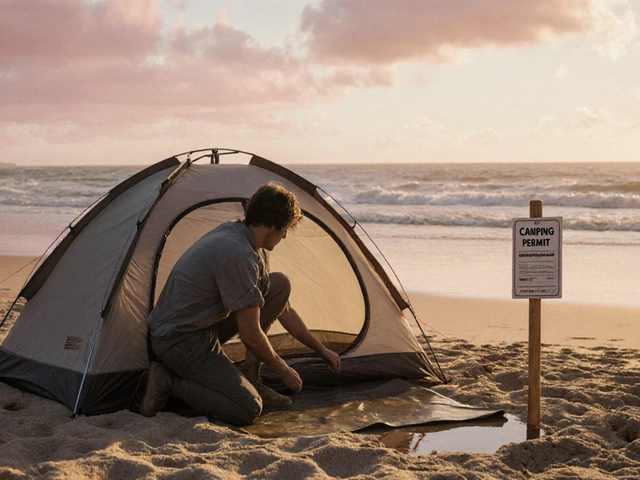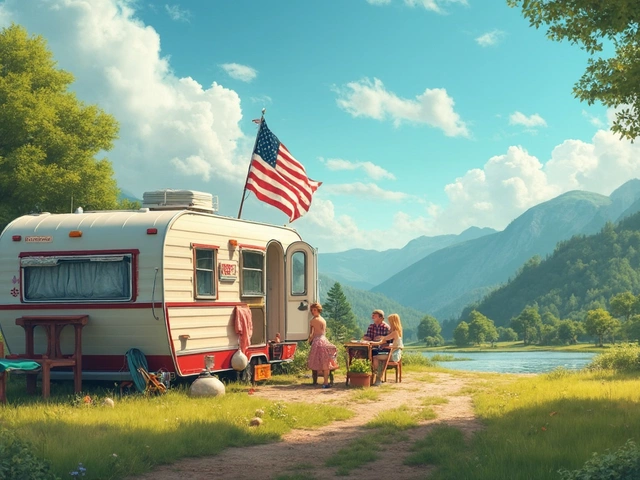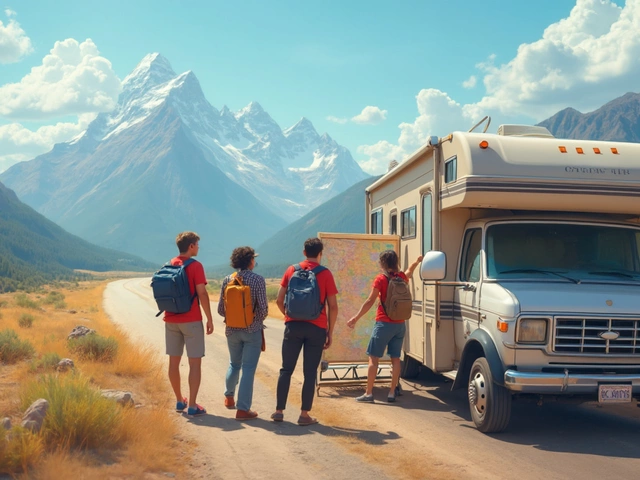Picture this: a sky bursting with stars, the crisp smell of pine in the air, and you, either tucked into a high-end safari tent with a king-sized bed or hunkered down in a sleeping bag, waiting out a genuine British drizzle. Is one really better than the other? The camping vs glamping debate isn’t going anywhere soon. You’ve got die-hard fans on both sides — tent-pitching purists and comfort-first glampers — and honestly, both camps have a pretty good argument. So, is camping better than glamping? Let’s go deep and see where you land.
What Really Makes Camping Special?
Why do some people get misty-eyed talking about a stiff mat and a mug of tea brewed in the rain? Classic camping has its own magic, and it’s not just about roughing it for bragging rights. There’s something freeing about stepping away from gadgets, streaming, and comfort zones, forcing yourself to embrace the wild and the unpredictable. Sure, you might spend an hour wrestling with guy ropes, and the sleeping bag might prove less forgiving than your mattress at home, but that makes every hot meal and sunset feel earned. One 2024 survey found that 68% of campers in the UK say minimalism is what they crave: “stripping life back” gives their minds a hard reset, away from work, social media, and even electric lights.
When you’re camping, especially if you’re out in the Lake District or the Scottish Highlands, you’re at the mercy of the elements. It rains, and you improvise. A hedgehog snuffles past, and you watch with a torch. You make memories, not just for your Insta story, but the kind you laugh about around a pub table months later. Campfire stories aren’t just part of the experience — sometimes they’re the point. The bonding you get sharing a tent with a mate, or boiling water for freeze-dried noodles after a long hike, sticks with you. It’s not about things being easy. It’s about feeling totally alive, wind-battered face and all.
To camp well, there are a few golden rules every rookie should know. First, practice pitching your tent before you get there; nobody wants to fight poles by torchlight. Second, always pack more socks than you think you’ll need — a 2023 study by the Camping and Caravanning Club found wet feet are the top complaint among British campers. Third, bring a proper sleeping mat. There’s a reason seasoned campers treat themselves to insulated mats: the ground steals body heat fast, especially in UK forests or on Dartmoor’s moorlands. Finally, leave no trace. Respect for the outdoors is non-negotiable — bag up rubbish, avoid damaging trees, and only light fires where it’s allowed. When you look back, it’s usually the little mishaps (blown-away tarps, miso soup spilled in sleeping bags) that become your best stories.
Something about cooking over a campfire just tastes better. Whether you’re grilling sausages on a stick or experimenting with open-fire pancakes, that smoky flavour has no rival. But it isn’t just the food — it’s the practical challenge, the jokes about burnt marshmallows, the pride of finally getting the fire going in a drizzle. Studies show kids who camp develop better problem-solving skills and resilience. You learn to deal with setbacks when your torch batteries die or you set up your tent on a hill and slowly slide to the bottom by morning.
There are downsides, sure. Not everyone loves midnight trips to the loo armed with a head-torch, or mud in every zipper. Camping can test relationships. But it’s often those “awful” moments — soggy shoes or surprise tent leaks — that forge the strongest bonds. You’re not just visiting nature; you’re living in it. That, for a lot of people, is what makes camping less of a holiday and more of a personal reboot.
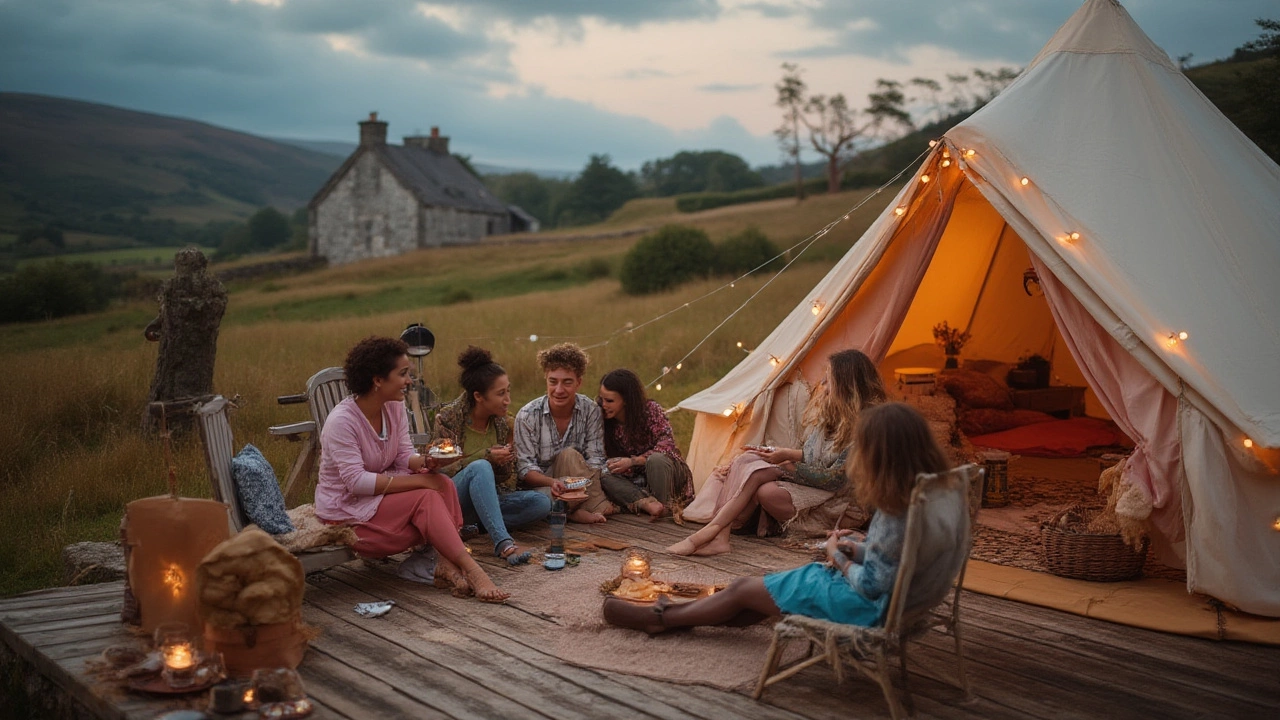
Glamping: Comfort, Style, and a Touch of the Wild
Glamping is a new word for a very old idea: enjoying nature without giving up comfort. Think shepherd huts with luxury bedding, yurts with proper heating, or treehouses that look straight from a design magazine. You get all the best scenery without battling for dry socks. Glamping has exploded in popularity across the UK since 2020, with more than 4,000 sites listed on visitengland.com as of early 2025. Whether it’s a family break in Cornwall or a romantic getaway in the Highlands, there’s a glamping spot to match almost any vision you’ve got.
For people who love the idea of stars but not sleeping rough, glamping is the answer. Plush duvets, electricity for charging phones, working loos, and even hot tubs pop up at luxury sites now. You still wake up to the sound of birds rather than traffic, but without early morning tent condensation dripping on your face. If you want to explore nature by day, then retreat to a heated pod with wifi and fresh coffee in the evenings, glamping offers the best of both worlds. The industry calls it “nature with a safety net.”
But glamping isn’t just about comfort — it’s about the experience. Some sites offer bespoke activities such as foraging walks, paddle boarding, or pizza-making in wood-fired ovens. Owners often design spaces with real love: fairy lights, handmade furniture, welcome hampers stocked with local treats. If you’ve got kids or family members who aren’t natural campers, glamping can win over skeptics and get everyone outdoors, even those who swear they hate mud and bugs. You get to unplug, but you don’t have to give up your morning shower. In fact, research by VisitScotland shows that glamping trips convinced nearly half of participants to try wilder, more traditional camping later on, just because it made the outdoors seem easier and more fun.
Now, let’s talk money. Some glamping spots rival city hotel prices, especially during summer or festival weekends. Still, when you add up the cost of camping gear (tent, mats, lanterns, stove), glamping can be decent value, especially for first-timers who don’t own the kit. Seasoned campers sometimes scoff at glamping’s luxury, but the market keeps growing. It’s not just “soft” camping — it’s a whole new way to connect with nature without sacrificing your back or sleep.
Top tips for glampers? Pack light. You probably won’t need that extra torch or ground sheet. Bring a book, and maybe some local cider to enjoy under the stars. Don’t forget slippers for the morning chill on a cabin floor, and if your spot comes with a wood-burning stove, check if wood is provided or bring your own. Remember, most glamping sites are on working farms or rural estates, so wildlife is part of the package — expect the odd owl hoot or fox in the distance at night.
Not all glamping sites are created equal, though. Some lean rustic; others rival boutique hotels. Before you book, read reviews and double-check what’s included. Is breakfast served, or should you pack supplies? What heating is available if the temperature drops? Some pods even have wine fridges or fancy coffee machines — a far cry from boiling a kettle over a camp stove. Glamping has become a trend in destination weddings, yoga retreats, and corporate away-days, riding the wave of what travel insiders call “experiential escapes.”
On the sustainability front, glamping is making strides. Sites often use solar power, composting toilets, and locally-sourced building materials. For eco-minded travellers, these options make enjoying comfort feel guilt-free. Still, it’s always worth checking the site’s credentials, as “eco” claims are everywhere, but not always genuine. For your own peace of mind, stick to sites with a Green Tourism or Eco Retreats accreditation.
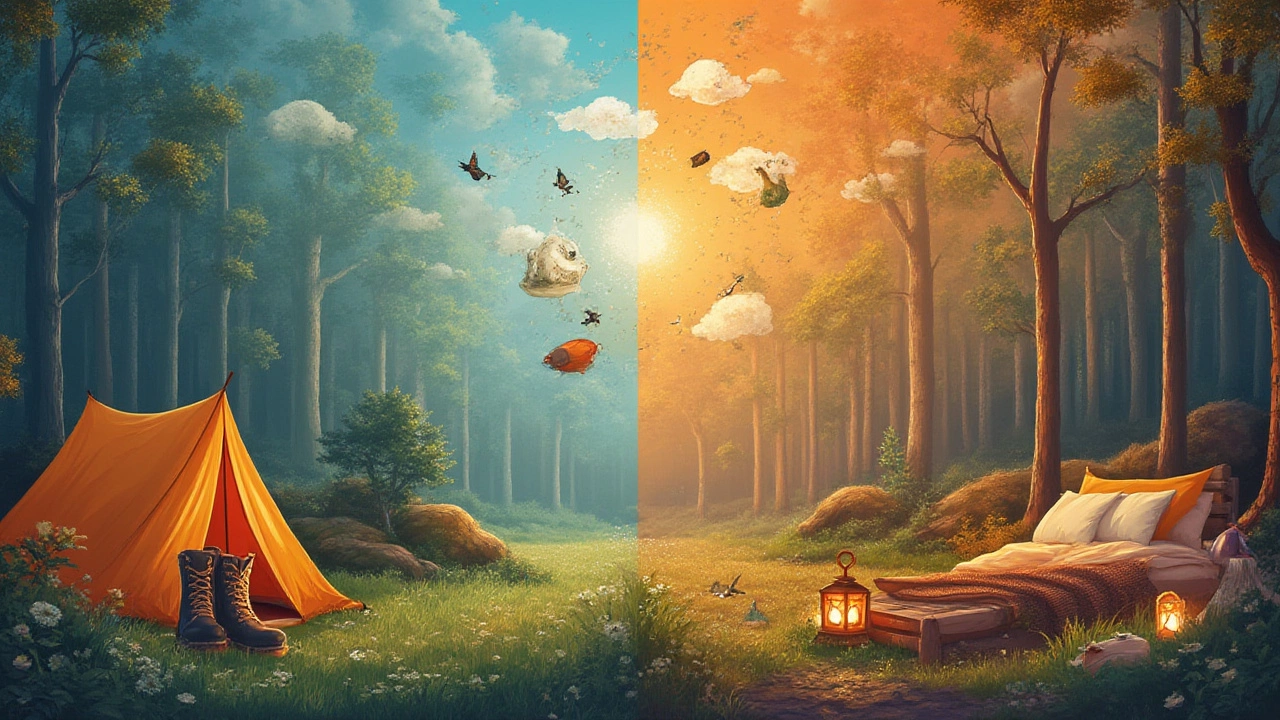
Which Way Should You Go? Deciding Between Camping and Glamping
Trying to pick a winner in the camping vs glamping debate? It really comes down to what you want from your time outdoors. If you crave self-sufficiency and a little hardship, camping gives you the raw edge. You’ll feel the wind, hear the wildlife at night, and walk away with stories of survival and muddy wellies. It’s the ultimate digital detox, no filter needed, and often the cheapest way to see parts of the UK that don’t have hotels for miles. Camping is perfect if you want to develop outdoor skills or introduce kids to wild spaces without distractions — just don’t forget the insect repellent.
Glamping, by contrast, is the outdoor experience reimagined for comfort. It’s great if you want to dip your toes into nature but still get a full night’s sleep and decent coffee. It tends to win with families, couples, or groups with mixed experience levels. Health-wise, you dodge the aching muscles and back complaints from thin mats and poor weather, making it a smart option for older travellers or those who want accessibility features. Glamping is also a lifesaver for spontaneous trips: you can turn up with just a bag and be set for the weekend.
Something to note: not all places offer both. Remote forest locations in Northumberland or Wales, for example, might be strictly wild camping only, with no glamping pods in miles. But other regions, especially around Dorset or Cornwall, are packed with glamping options on every hillside. If you want privacy and a chance to really disconnect, wild camping spots may suit you best, but check local access rules (Scotland’s right-to-roam is still unique in the UK).
Want a hybrid? Try “luxury camping” or “boutique camping” — these sites combine aspects of both: tents with real beds, communal kitchens, and fire pits. Perfect for a first trip or if your group is split. Lots of people end up loving both styles; hardcore campers who swear by bivvy bags are now known to splurge on glamping weekends when they fancy their own loo and a break from packing gear for hours. In fact, experienced campers often recommend trying glamping at least once, just to see if your “outdoor” style changes when the pressure is off.
Here are some quick tips to help you decide:
- If you like challenging yourself and learning skills, camping is for you.
- If you have small kids or family members who dislike roughing it, glamping might win the day.
- If budget is top priority and you own some gear, camping is the cheapest way to go.
- If comfort and convenience matter more, glamping can’t be beat.
- If you want a unique event or celebration, glamping’s got plenty of "wow".
The best thing? UK laws allow both ways to get outdoors, and with so many sites springing up, you’re never far from a spot that suits your mood. Sometimes life calls for a rugged tent weekend with mud and midges. Other times, you just want a hot shower, wood fire, and the hills in the morning. The real answer: try both, switch it up, mix and match your adventures. You never know, your next favourite holiday could be inside a yurt — or under a leaky tarp with lifelong friends laughing beside you.
